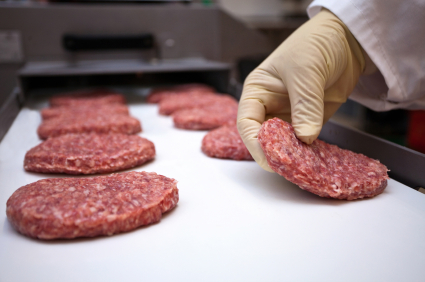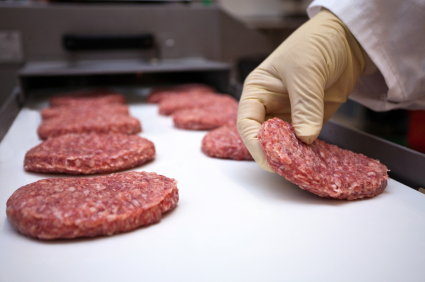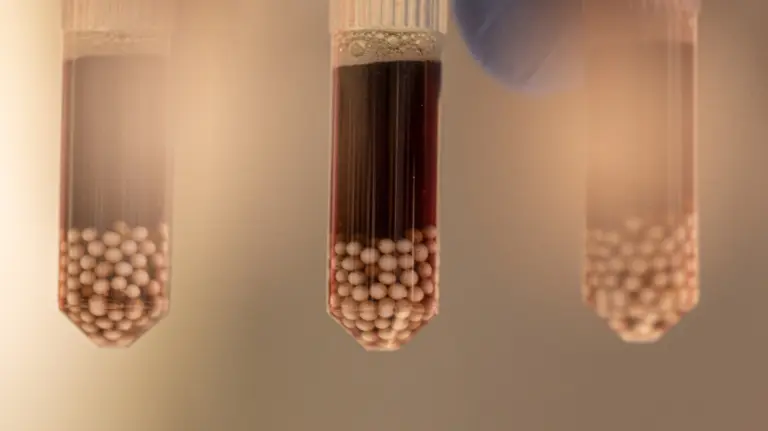In Meat Wagon, we round up the latest outrages from the meat and livestock industries.
———
 Massive burger recall: what would Meat Wagon be without one? The Obama administration still hasn’t chosen a director of the USDA’s FSIS — the office charged with overseeing the safety of the nation’s meat supply.
Massive burger recall: what would Meat Wagon be without one? The Obama administration still hasn’t chosen a director of the USDA’s FSIS — the office charged with overseeing the safety of the nation’s meat supply.
Meanwhile, the new year is off to a rollicking start on the E. coli-tainted-beef front. A California company named Huntington Meat Packing has had to recall 864,000 pounds of ground beef last week, after USDA inspectors found it laced with the deadly E. coli 0157 strain.
According to Meat Wagon’s proprietary mathematical models, that’s enough dodgy burger to make 3.56 million Quarter Pounders, or a scary Quarter Pounder for every resident of Chicago (population 2.8 million), with 756,000 extra burgers for folks to have seconds. Wow.
It should be noted that Huntington Meat Packing is a relatively small beef packer in an industry dominated by giants. These days, three companies — Tyson, Cargill, and JBS — slaughter about 75 percent of cows raised in the United States. With their massive market shares and global-spanning scale, these corporations are masters at churning out profit by doing everything as cheaply as possible; and forcing any smaller company that wants to compete with them to do the same.
When your main incentive is to do things cheaply, as opposed to doing them right, food-safety problems are all but inevitable. Relatively small packers like Huntington are hardly the only ones prone to churning out tainted meat. Last year, a plant owned by Cargill — the globe’s largest agribusiness firm, which packs about a quarter of the beef consumed in the U.S. — had at least two massive recalls (see here and here).
The beef industry’s steady trickle of recalls is surely expensive and embarrassing; but it isn’t doing much to change practices — or else there wouldn’t be that steady trickle of recalls. It must be cheaper to endure recalls than to stop practices that cause them in the first place.
Indeed, the business model of modern beef production hinges on two practices that seem to ensure that the resulting product will be laced with pathogens. Both are related to the feedlot, not the slaughterhouse. The first is feeding corn and corn byproducts to ruminants that evolved to eat grass — a feeding regime that seems to have created E. coli 0157, which is innocuous to cows but potentially deadly to humans. As Michael Pollan wrote a few years ago:
The lethal strain of E. coli known as 0157:H7, responsible for this latest outbreak of food poisoning, was unknown before 1982; it is believed to have evolved in the gut of feedlot cattle. These are animals that stand around in their manure all day long, eating a diet of grain that happens to turn a cow’s rumen into an ideal habitat for E. coli 0157:H7. (The bug can’t survive long in cattle living on grass.)
The second highly questionable practice is to regularly dose cows with antibiotics, which probably explains the rise of antibiotic-resistant salmonella in hamburger meat.
Here’s what I think is going to happen: Rather than change these two practices, the industry and its government overseers will grope for a techno-fix– some sort of post-production sterilization that will (ostensibly) clean up the pathogen messes that start in the feedlot. I’d wager we’ll soon be hearing about irradiation as a “solution” to tainted burger; or perhaps a vaccine.
Such fixes perpetuate the problems they seek to “solve”–and generate new problems that will also need techno-fixes. It should remembered that “pink slime” — the ammonia-treated slurry of defatted slaughterhouse scraps that now ends up as a filler in 70 percent of U.S. hamburgers — itself started as a techno-fix to the pathogen problem. It was supposed to be so full of ammonia that it would sterilize hamburger mixes at 15 percent concentrations. We now know that far from sterilizing ground-beef mixes, pink slime often adds to the pathogen load in the hamburgers it graces.
-
The poultry industry already uses post-slaughter sterilization to reduce pathogens. Did you know that the U.S. poultry industry subjects the chicken it sells to a chlorine bath? And that Russia has banned imports of U.S. poultry because it disapproves of the process? Russia has also “banned pork from all but six U.S. processing plants for excessive antibiotic residues,” Reuters reports.
Whether the chlorine bath leaves traces on the treated chicken and harms consumers is an open question. One thing seems clear: it doesn’t prevent chicken on the market from containing pathogens. From the CDC Website: “In 2005, Campylobacter was present on 47 percent of raw chicken breasts tested through the FDA-NARMS Retail Food program.”
-
Despite the recent unpleasantness, the industrial-meat giants look set for a mighty stock market rebound in 2010, reports CBS MarketWatch. In fact, their shares have already been rallying over the past three months:
Tyson Foods shares are up 12 percent, while pork producer Smithfield Food Inc. is up 19 percent. Chicken supplier Sanderson Farms Inc. is 21 percent higher in the same three-month period.
-
Speaking of industrial-scale slaughterhouses, Missouri is now in the business of subsidizing them.
ConAgra Foods will receive state tax credits to help create new jobs and investment at the company’s meat and poultry processing plant in Trenton, Mo. The Missouri Department of Economic Development (MDED) said in a news release that it has approved $247,285 in tax credits over a five-year period to add 10 new jobs and $9 million in new investment to expand the Trenton facility.
I’d bet that investing that same $247,285 in slaughterhouses designed for small, pasture-based farmers would create more jobs, and more economic activity, than handing it to ConAgra.



